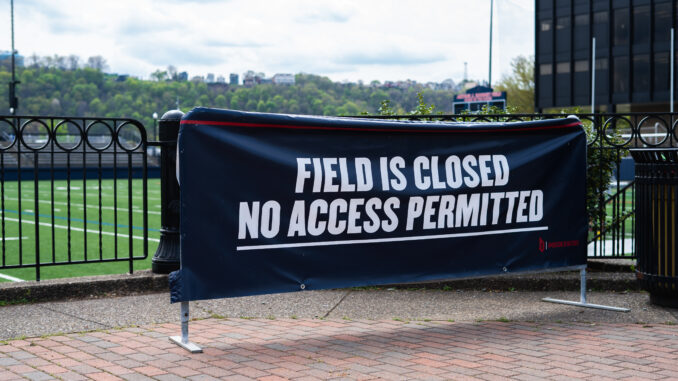
04/15/2021
Noah Wilbur | Opinions Editor
Last March, sports enthusiasts, as well as the players themselves, were in utter disbelief as sporting events across the globe came to a halt after the emergence of COVID-19 and its ensuing spread. The ambiguity surrounding the pandemic brought forth a number of questions concerning the future of sports, and whether or not we would ever return to a time when attending a baseball game with friends and family is considered “normal.”
From sports venues turning into breeding grounds for the virus, to the inherent health-related risks posed not only to the players and their families but also to the coaches, the overwhelming evidence clearly indicated that the coronavirus pandemic might change the face of the sports world for years to come.
However, in recent weeks, it has become apparent that this might not be the case with athletic leagues — collegiate and professional — seemingly putting those questions to rest by opening their stadiums and arenas to fans in what many would consider to be a timely manner.
As state and local governments continue to lift social restrictions, many restaurants and bars are permitting 75% capacity while employees slowly filter back into their workplaces and return to a “normal” day-to-day schedule. Most importantly, sports clubs are once again allowing fans to enter their facilities to watch as their favorite teams put on a show.
For example, nearly two weeks ago, the Texas Rangers hosted a baseball game at full capacity — the first sports event in the U.S. in over a year to include more than 40,000 fans in one place, at one time. It is apparent, at least in Texas, that people are prepared to sit next to strangers in a public setting without a mask.
Not to mention, the National Basketball Association (NBA) and the National Football League (NFL) each recently announced their intentions to authorize full capacity attendance at arenas and stadiums in the near future, with colleges and even some high schools following their lead. In fact, just last month, the Minnesota Vikings announced its ongoing intent to host football games at full capacity this fall during the 2021 season.
In light of the above evidence, it appears that the short-term outlook for the sports world is grossly optimistic as social restrictions are reversed around the country, and people — both young and old — search for fun activities to enjoy with family and friends.
Admittedly, the recent resurgence of sporting events in America is primarily attributable to rising comfort levels among fans resulting from the widespread availability of COVID-19 vaccinations. With more and more Americans receiving their vaccine every passing day, whether it be the first or second dose, the environments within the stadiums and arenas across the country simultaneously grow safer each day as well.
Despite this positive and encouraging outlook I’ve just described, according to recent data, the truth of the matter is that the majority of Americans still do not feel comfortable attending a sports event, even more so when it is located inside an enclosed venue.
As reported by data analytics firm Morning Consult in March of this year, only 32% of U.S. adults are willing to attend an outdoor sporting event, with a meager 22% expressing interest in attending an indoor event.
Be that as it may, given the current rate of the vaccine rollout in the country, I am of the opinion that the sports world is on its way to returning to some form of normalcy in the coming months. With fans eager to support their teams in person and athletes even more enthusiastic to no longer stare at a sea of cardboard cutouts, there is not any obstacle mighty enough to stop the greatest comeback of all time.
My advice? Go get vaccinated! I cannot say it loudly enough…
